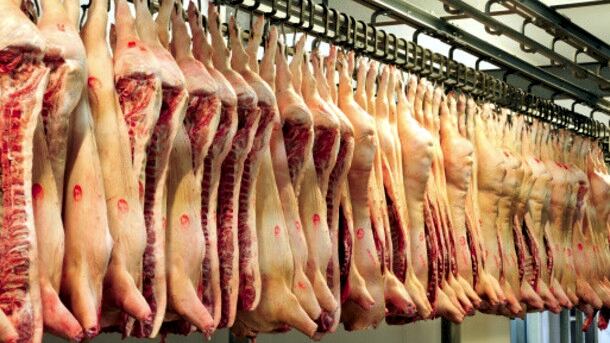Blood is one of the biggest by-products in slaughterhouses all over the world, and as such can pose a major challenge to the meat industry in terms of removal and treatment. However, there is a great deal of potential to use blood to produce high-value functional proteins and food ingredients, argue researchers writing in Comprehensive Reviews in Food Science and Food Safety.
“While there are some examples of it being utilised in an optimal fashion, a concerted approach is lacking across the sector," wrote the Irish researchers.
Led by Sarah Lynch from Teagasc Food Research Centre, the team suggest that new developments in the collection and processing of blood, and the generation of protein isolates, mean that the use of ‘waste’ blood “represents a key resource for extracting additional value from the meat sector.”
“In recent years, there has been growing global pressure on the food industry to try and minimise the environmental impact of its activities and to improve sustainability,” wrote Lynch and her team – noting that this has led to increased interest in recovery and optimum use of by-products from the food industry.
“Blood has excellent nutritive value, not only because of its high protein content, but also because of the bioavailability of the nutrients,” they said.
Despite its low levels of the essential amino acids methionine and isoleucine, blood can be used as a source of high-quality proteins for both animal feed and human consumption, said the authors.
“Considering the need for implementing more sustainable and higher value practices, coupled with the global protein demand, many opportunities can be exploited by the sector through focusing on blood proteins.”
Legal framework
The Irish team note that under European legislation, blood is defined as offal – and is subjected to the same regulations as carcass meat – outlined in EC Regulation 853/2004, which lays down specific hygiene rules for food of animal origin.

Furthermore, the team noted that EU directive 2008/98/CE encourages waste prevention and promotes recovery and recycling, in addition to defining for the first time the difference between ‘waste’ and ‘by-product’.
“According to this directive, a by-product differs from a waste because (i) it will be used after the main process; (ii) it can be used directly, with no ulterior transformation different from the regular industrial practices; (iii) it is produced as an integral part of an industrial process; and (iv) its ulterior use is legal, for instance, the substance or object meets all the requirements for the specific application relative to the products and the environment and health protection, and it will not produce negative impacts either on human health or the environment,” they noted.
Future challenges
While there is a concerted effort to reduce food waste and better utilise by-products from the production and processing of pulses, seeds, and dairy industry, there is a lack of focus on meat – and in-particular blood, which remains an under-utilised product, argue Lynch and her colleagues.
They added that previous estimates from 2001 suggested that around 30% of blood was used for low-value food industry applications while another 30% was used by the pet food sector.
“To the best of our knowledge, no real estimation of blood usage has been reported recently however,” they said – noting that more efficient and higher value use of blood proteins faces several challenges that science and technology need to address.
According to Lynch and her team, these challenges are:
- More efficient and easy-to-use technologies for hygienic blood collection
- Improved (such as low haemoglobin content and high protein content) processes for industrial-scale plasma production
- Greener, more feasible, and more sustainable processes for protein separation and purification
- Efficient and effective discolouring of haemoglobin
- A better understanding of how novel processes, such as ultrasound, pulse electric fields, cold atmospheric plasma, or high pressures can affect protein functional properties
- Functionality in real food systems and how the common food processing procedures performance
- Development of novel products, based on formulations that include blood proteins, targeting consumer demands for healthy, protein rich, and tasty products
- In depth consumer studies to evaluate consumer perception and acceptance of blood and blood derived products
An offal-y big opportunity
“Until very recently, the potential of food by-products to create new opportunities and markets has been underestimated; blood is one of these underutilised materials and it has been identified as a key source of extractable high-value molecules for applications in sectors such as the food, biomedical, and pharmaceutical industries,” said the team.
“Taking these factors, legal framework, new technologies, together with increased industry research interest in capitalising on the inherent value of blood, this approach can lead to enormous economic, societal, competitive, and environmental benefits, in terms of new jobs and opportunities in the global food market,” they concluded.
Source: Comprehensive Reviews in Food Science and Food Safety
Volume 16, Issue 2, Pages 330–344, March 2017, doi: 10.1111/1541-4337.12254
“Harnessing the Potential of Blood Proteins as Functional Ingredients: A Review of the State of the Art in Blood Processing”
Authors: Sarah A. Lynch, et al
